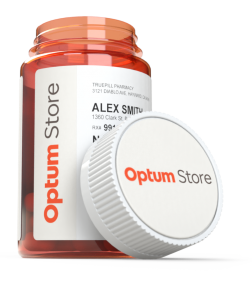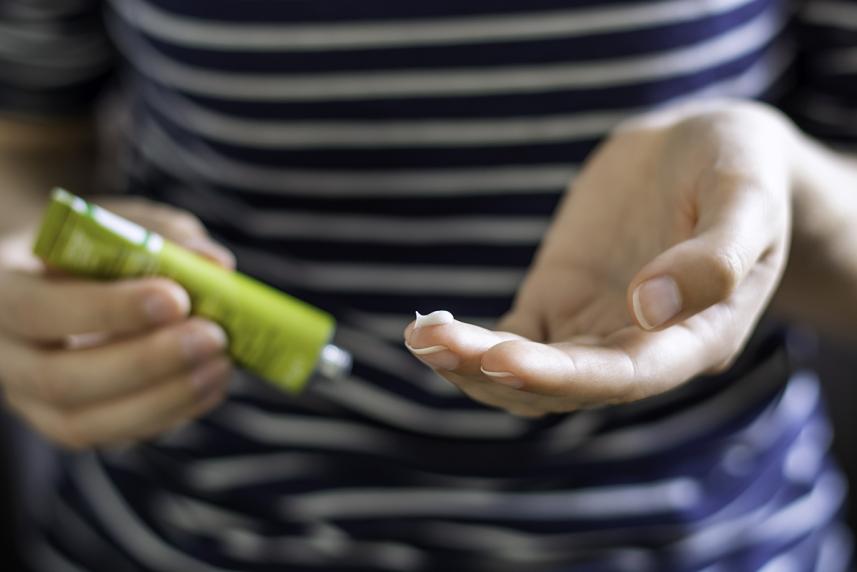
With prescriptions as low as $3 per month, you might be surprised at what you can save with the Optum Store.

These ugly little blisters around your mouth can be a real pain. Find out what causes cold sores and how to treat them.
You have a blister above your lip that stings and is crusting over. There’s a good chance that it’s a cold sore. These little blisters that crop up around your mouth are annoying, hard to cover up and super common.
Lots of us get them. In fact, more than half of Americans carry the virus that causes cold sores, according to the Cleveland Clinic. And about 20% to 40% of those people will then develop cold sores.
These fluid-filled bumps are a bummer. “Most patients worry about the pain and how cold sores look,” says Adam Elshafei, MD. He is a dermatologist from Chicago, Illinois. The good news is that they’re usually not serious — and they should clear up in a few weeks.
We asked experts for the straight facts about why you get cold sores, what the symptoms are and how you can treat them at home.
Cold sores are also known as fever blisters, but they aren’t caused by either colds or fevers. They’re usually caused by a virus called herpes simplex virus type 1 (HSV-1). Many people get infected with this highly contagious virus during childhood.
For example, a parent can pass HSV-1 to their child when they kiss them or drink from the same cup. You can pick it up through any contact with saliva, shared utensils, towels, toothbrushes or other personal items.
Not every child who catches the virus has symptoms, according to the American Academy of Dermatology (AAD). But once you’re infected, the virus stays in your body for life. Some adults never have symptoms. But others get cold sores on occasion.
You can often feel a blister coming on before you see it, says the Mayo Clinic. The most common cold sore symptoms include:
The Optum Store provides total care for your body and mind. Refill medications, schedule a virtual visit or shop for health essentials all from the comfort of home. Start exploring.
Now you understand the basics about how cold sores happen. Here are some handy facts that can help you treat and prevent them.
Cold sores can come back. It’s a relief when an outbreak clears up. Just be aware that you may get cold sores again. That’s because the virus stays in your nerves and can reawaken, according to the AAD.
But cold sores that recur are less severe than the first time you get them, says Stephanie Cotell, MD. She’s a dermatologist at Northeast Dermatology in Gahanna, Ohio. One signal they’re on their way back? “You’ll get a tingling, and it will always be in the same place.”
You’re more likely to get an outbreak when you’re run-down. Even though cold sores aren’t caused by colds, being sick or run-down can trigger a blister outbreak. “Cold sores tend to pop up when your immune system is weakened,” says Dr. Elshafei. Some common triggers:
“One way to prevent cold sores is to stay healthy,” says Dr. Elshafei. “So get plenty of sleep, work out and stay hydrated to help avoid outbreaks.”
Sunlight is a big trigger, too. You might be surprised to learn that ultraviolet (UV) light from the sun can cause a cold sore outbreak. “UV light is known to provoke cold sores and reactivate the virus,” says Viktoryia Kazlouskaya, MD. She’s a dermatologist and assistant professor at the University of Pittsburgh. “Many people get them in the summer,” she says. Smart strategy: Wear a lip balm with sunscreen every day to protect your lips, says Dr. Kazlouskaya.
(Find tips for choosing the right sunscreen here.)
Cold sores aren’t the same thing as genital herpes. There’s another type of herpes virus called HSV-2, which causes genital herpes. When some patients hear that cold sores are caused by the herpes simplex virus, they worry that it’s sexually transmitted, says Dr. Cotell. “I think patients do get concerned.”
In some cases, HSV-1 can be transmitted from the mouth to the genitals and cause sores there. But in general, cold sores and genital herpes are separate and not contracted in the same way. Still, it’s important to know that you can spread HSV-1 through mouth-to-mouth contact as well as oral sex, says Dr. Elshafei. This can happen even when you don’t have sores now.
You can’t cure cold sores, but you can treat them. The good news is that prescription and over-the-counter (OTC) treatments can relieve cold sore pain and promote healing.
Prescription medication: Your doctor might prescribe an antiviral medication that comes in pill or ointment form, such as:
OTC medication: Abreva® (docosanol) is a cold sore cream that you can buy at the pharmacy. It is approved by the Food and Drug Administration. Abreva has been shown to shorten healing time. “It’s a safe, over-the-counter treatment that patients can get without seeing a dermatologist or can use in addition to oral medications,” says Dr. Cotell.
One final tip? Be sure to keep the sores moist with petroleum jelly (such as Vaseline® or Aquaphor®). “That will speed up healing faster than a dry crust, which will take longer to heal,” says Dr. Cotell. And never pick or pop cold sores. This can spread the virus and lead to scarring. “If you keep the skin clean and hydrated, the sore should heal without a mark,” says Dr Elshafei.

With prescriptions as low as $3 per month, you might be surprised at what you can save with the Optum Store.
Additional sources
Statistic: Cleveland Clinic (2019). “Cold Sores”
Virus facts: American Academy of Dermatology (n.d.). “Cold Sores: Overview”
Symptoms: Mayo Clinic (n.d.). “Cold Sore”